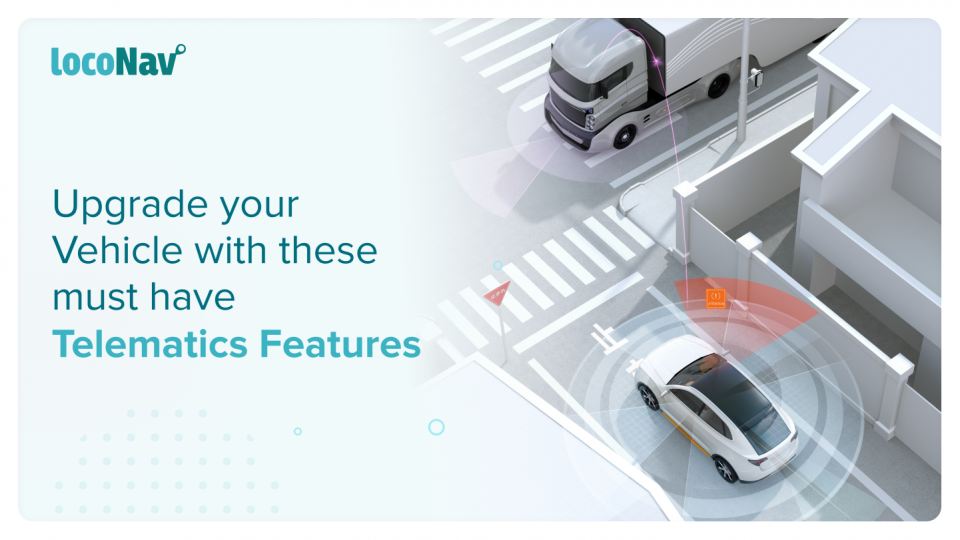

Although vehicle telematics systems have been available for a while, their use in personal vehicles has increased dramatically in recent years due to developments in technology and software-as-a-service (SaaS), as well as the general demand for personal safety.
Advanced Video Telematics Solutions at Ridiculously Accessible Prices!
Car telematics systems provide a wealth of features that make owning and managing a car much more efficient, from correctly tracking your vehicle’s location to driving behavior and maintenance notifications.
Vehicle telematics users have utilized them to realize the full potential of their cars in a variety of ways, including:
- Lowering fuel costs by detecting areas of waste.
- Monitoring driving behavior to improve safety.
- Increasing the lifespan of their automobiles through maintenance reminders.
- Lowering maintenance costs with customized warnings that indicate issues
Telematics Features to look for in Cars:
- Complete Visibility via 24/7 GPS Tracking
- Tailor-Made Alerts
- Route Optimization
- Driver Monitoring
- Vehicle Health Reports
- Additional Safety Features
What is Telematics in a Car?
Telematics is an automobile communication system that relies on information traveling to and from automobiles over wireless networks. The automobile industry is being pushed into the information age by the confluence of wireless communications, location technology, and in-vehicle electronics.
Car telematics serves a variety of applications for drivers worldwide. This technology prevents individuals from being lost, provides a quick way to get roadside assistance, and gathers data that may be utilized in a variety of ways. Telematics systems in cars integrate navigation, safety, security, and communication into a single piece of technology that fits on the dashboard of a vehicle. Wireless data is received by car telematics systems and transmitted via a crash-resistant box.
How does a Car Telematics System Work?
The telematics device retrieves vehicle data such as GPS position, speed, engine light information, and defects. The device’s built-in accelerometer measures G-force. The data is then transmitted to the cloud by the telematics device.
Car telematics devices and other linked hardware or sensors may process and analyze a large quantity of data, such as position, speed, trip distance, idle time, harsh driving, and fuel consumption.
Finally, the data is decoded and transferred to a telematics management software for reporting and analysis. Users can use the software to view and export reports and gain business intelligence, such as the top ten drivers with the most speeding events or vehicles that are due for routine maintenance.
Salient Telematics Features You Should Look for In Your Car
Complete Visibility via 24/7 GPS Tracking
GPS tracking allows you to see your car’s position and movement in real-time. This tracking system allows you to trace excursions from beginning to end. The system can produce objections and send you real-time notifications about the location of your fleet car, whether it is parked or moving, and who is driving. You may view data on over-speeding, driving direction, ignition status, driving offenses, previous travels, and other topics. You’ll also learn where they halt and for how long. This can boost productivity, enhance customer service, and improve the overall vehicle economy.
Route Optimization
Route planning and optimization are taken to another level with car telematics and GPS tracking. Route planning can be used to plan the most productive and cost-effective routes that travel from A to B in the least amount of time while avoiding overlap. Vehicle telematics determines the best route to and from destinations while trying to account for route optimization aspects such as customer demands, traffic or congestion, existing construction works and notified accidents, necessary journey deviations (e.g. rest breaks), and unique delivery requirements.
Driver Monitoring
This allows you to investigate occurrences such as hard braking, excessive acceleration, excessive idling, and more. Drivers must frequently be made aware of the impact their driving conduct has on the vehicle’s safety and vehicle health. This information can be shared with hired drivers to enable them to improve their driving and decrease accidents.
Vehicle Health Reports
Some maintenance procedures are timed, while others are based on mileage or engine hours. Keeping track of all of this can be difficult, and failing to do regular maintenance can lead your vehicles to consume excessive gasoline or even break down suddenly. Ensure your car telematics system provides warnings that allow you to plan ahead of time for maintenance, keeping your vehicles on the road and your staff on the job.
FAQ
Do all cars have telematics?
Although there is no requirement for individual automobiles to carry telematics devices, according to AIS 140, all corporate and public transportation vehicles must have vehicle tracking systems. For the safety of the vehicle’s occupants, these telematics systems must also include emergency buttons and camera surveillance.
Why is it important to have a telematics device installed in your car?
It is important to have a telematics device installed in your vehicle because it:
- Lowers fuel costs by detecting areas of waste.
- Monitors driving behavior to improve safety.
- Increases the lifespan of their automobiles through maintenance reminders.
- Lowers maintenance costs with customized warnings that indicate issues
What does telematics record?
GPS technology is used by your telematics box to gather data about your driving. The data is mostly concerned with your speed, acceleration, braking, and the time you drive. Your driving conduct is tracked throughout multiple journeys to calculate an average driving score.